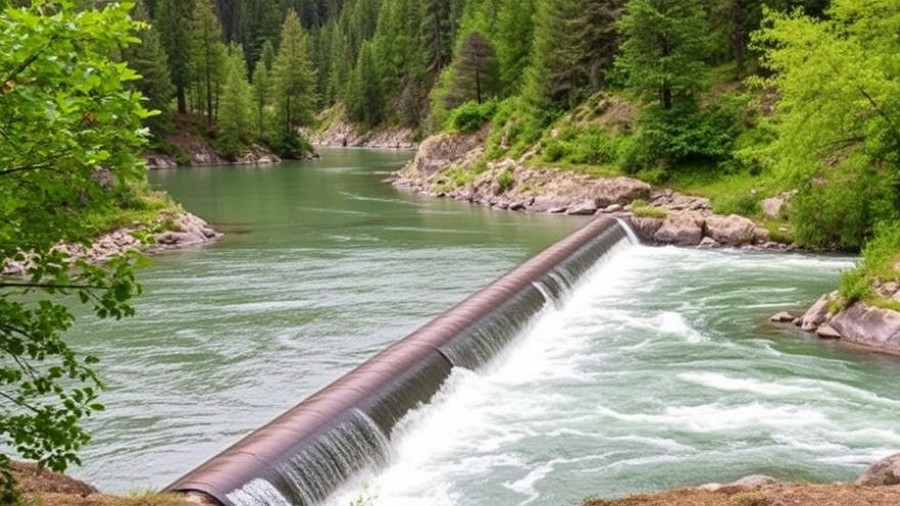
A Historic Milestone: The Klamath River’s New Chapter
In a spectacular rebirth of one of the U.S.'s most iconic rivers, the Klamath River has begun its incredible recovery following the historic removal of four hydroelectric dams. This pivotal project, the largest of its kind ever attempted, saw its final dam removed last year, and the results have been nothing short of transformative. It marks a pivotal moment not just for the river's ecosystem, but for the youth leading the charge in conservation and restoration efforts.
Indigenous Youth Take the Helm
At the forefront of this movement are Indigenous teenagers who paddled the entirety of the Klamath River, spanning about 310 miles—from its headwaters in the Cascades to the Pacific Ocean. For the first time in over a century, this journey symbolizes both a reclaiming of cultural identity and the physical resurrection of a river long suffocated by human intervention. The journey culminated in a breathtaking finale that pulled together youth from various Indigenous communities worldwide, highlighting the interconnectedness of rivers and cultures. As Ruby Williams, a key participant in the expedition, shared, “For a split second, we stood there, like, what do we do now?” before they leaped into the waves of the Pacific, celebrating this monumental achievement.
Positive Ripples: Ecological Impact and Restoration
The ecological impact of the dam removals has been immediate and promising. Even in the short span of a year, the river has welcomed back its resident species, with salmon populations traveling further upstream than they have for decades. Observing these rapid changes is a testimony to the resilience of nature when given the opportunity. Renowned environmental advocate Ren Brownell noted that “These kids will be the first generation who get to grow up alongside a clean Klamath River,” emphasizing the long-term benefits these developments will have on ecosystems not just locally, but globally.
Inspiring a Global Movement
This restoration effort is inspiring a broader movement, motivating Indigenous youth-led initiatives across continents. Notably, representatives from as far as the Bolivian Amazon and New Zealand joined the Klamath paddlers, forming alliances and sharing experiences that propel similar restorations in their own homelands. Their stories serve multiple purposes—educating local communities and international organizations about the impacts of damming, while advocating for sustainable practices in river management.
Tools for Future Generations: Lessons in Environmental Stewardship
The Paddle Tribal Waters program, part of the Ríos to Rivers initiative, not only equips students with kayaking skills but also nurtures an intrinsic relationship with their local waterways. Participants not only learn about paddling but engage in broader discussions around environmental stewardship, indigenous rights, and ecological literacy. For teens like Williams, who aims to study environmental conservation, the river is more than just water intended for recreation; it symbolizes resilience and serves as a classroom for reclaiming their heritage and nurturing the planet.
The Future Beyond the Klamath
While these successes are heartening, challenges linger, including the continued presence of two remaining dams on the river. Many environmentalists, like Barry McCovey Jr., have cautionary optimism regarding future recovery efforts, emphasizing that healing these ecosystems will take time. Shockingly, the scars of industrial intervention don’t fade overnight, but driven by the achievements of this unprecedented youth expedition, the potential for a nearly revitalized ecosystem appears increasingly achievable.
Taking Action To Support River Restoration
The inspiring efforts by the Klamath youth offer a vital lesson in taking action towards environmental restoration. As we witness their success, it becomes clear that through collective efforts and a commitment to sustainable practices, we can contribute to a brighter future for our rivers. Engaging in community efforts, supporting policies that favor ecological restoration, or simply advocating for awareness on these issues are small steps that anyone can take.
Conclusion: A Call to Foster Change
This journey encapsulates a powerful narrative about resilience, identity, and environmental stewardship. It shows how young individuals can become catalysts for change and inspire movements internationally. As the Klamath sprints toward a healthier future, the tide of hope persists, reminding us that through unity and determination, great challenges can be surmounted. Williams reiterated a powerful sentiment for the next generation of environmental warriors: “All rivers should be free.” Now, let’s empower ourselves collectively to ensure that all waterways thrive.
 Add Row
Add Row  Add
Add 





Write A Comment